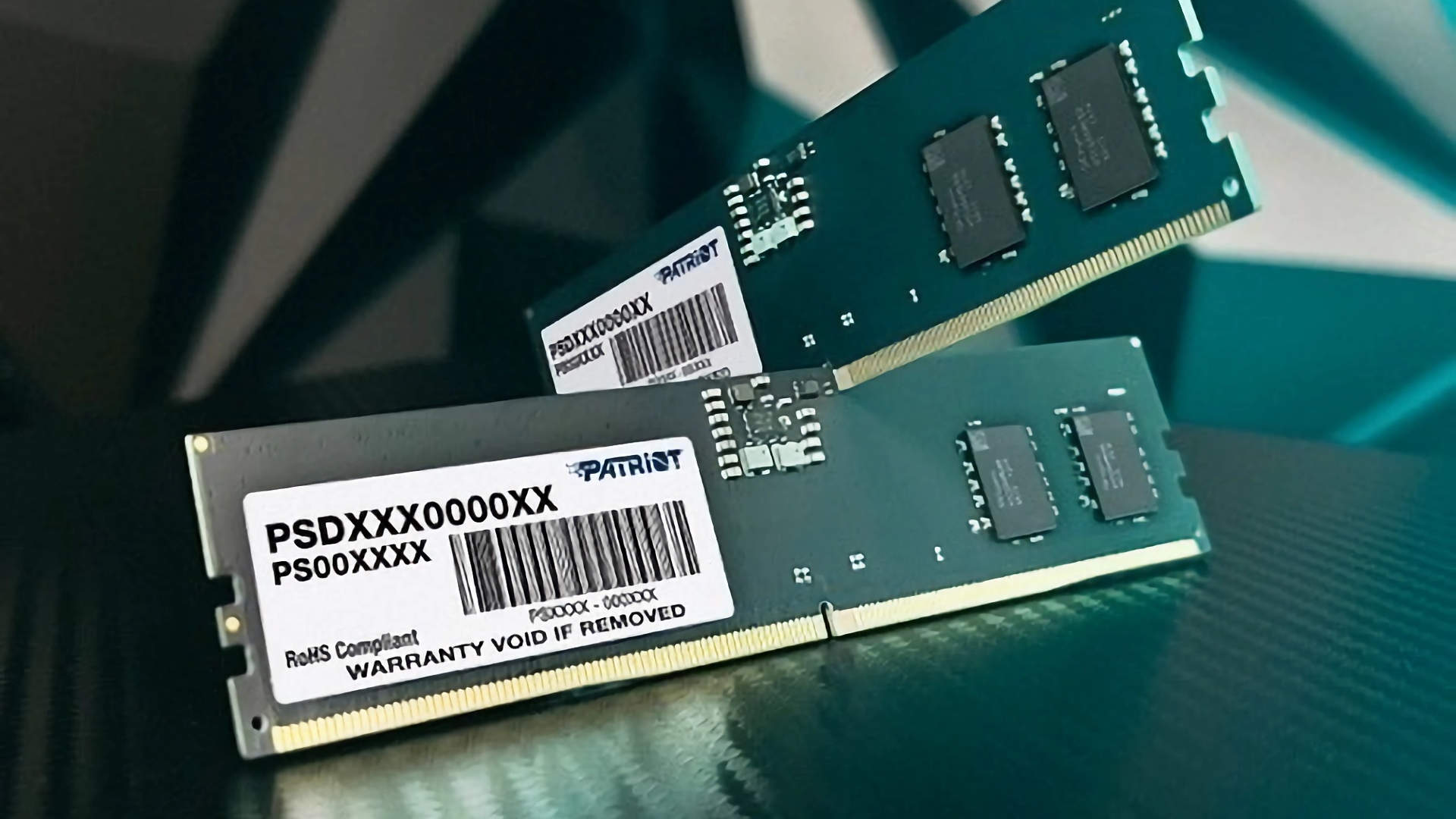JEDEC is a standards organisation that’s been responsible for laying the foundation for RAM clock speeds and timings for decades. In the case of DDR5, the most recent version of double data rate memory for PCs, the default speed is 4800MT/s and that’s to ensure full compatibility with all AMD and Intel CPUs. However, Patriot Group is developing a type of DDR5 stick that pushes this to 6400MT/s and higher, even if the CPU itself doesn’t normally support that speed.
While the JEDEC standard is DDR5-4800, all of AMD’s Ryzen 7000 series of CPUs happily work with DDR5-5200, and Intel’s 14th gen Core processors support DDR5-5600. Even then, you’ll often be able to use even faster RAM, such as DDR5-6000, with these chips.
The problem is that to support those speeds, the integrated memory controller (IMC) has to run faster than it’s designed to cope with and there’s quite a lot of variation in the quality of IMCs.
Enter stage left Patriot and its CKD DDR5 project (via Tom’s Hardware). This work involves creating RAM sticks that will run at a speed of up to 6400, even if the IMC is unstable at that setting. It’s not magic, it’s just engineering, or more specifically, the use of something called a client memory clock driver (or CKD for short).
This is a chip that buffers the clock signals between the IMC and the DRAM module, easing the strain on the IMC. Server-grade memory has featured such a thing for a good while now and Team Group has already beaten Patriot to the line, by adding a CKD to its Elite DDR5 range, to allow for stable running up to 6400. While that’s the same target for Patriot’s new modules, it’s also looking to push things further, to as high as 7200.
Faster RAM means more memory bandwidth for the CPU, which ultimately results in better performance, especially in games. However, trying to get something like a Ryzen 7 7800X3D to work with DDR5-7200 is nigh on impossible, as AMD says DDR5-6000 is the sweet spot for its Ryzen chips. Intel’s latest Core processors can handle faster speeds but even they get twitchy once you’re over 7000.
You’d be smiling like this if your laptop had DDR5-7200 (Image credit: Renesas)
There’s no such thing as a free lunch, of course, and the downside to using CKDs is the fact that data transfers are held back for at least one clock cycle and to ensure full stability, Patriot and others going down the CKD route will probably use slower timings and lower voltages.
For latency-sensitive applications, you’d possibly want to avoid using DDR5 modules fitted with CKDs but for everyone else, the idea is that you’ll be able to buy a fast DDR5-6400 kit or faster and install it in your PC with no problems whatsoever. And who knows, perhaps in a few years, we’ll all be fitting DDR5-8400 or better.
Not that this will come cheap, of course.
Sure it’s just a couple of extra components on the DRAM module itself but vendors will price CKD models higher than standard ones, not only to recoup research and development costs, but also to market the products as being enthusiast-level items.
It wasn’t all that long ago that DDR5-5200 was very expensive but you can get some fast dual-channel kits for relatively little money now.
So I fully expect that CKD-controlled DDR5 will not only fall in price but will become the norm, and sooner than you’d possibly expect. Just wait for the memes to roll in when we get the first DDR5-9000 kit.










